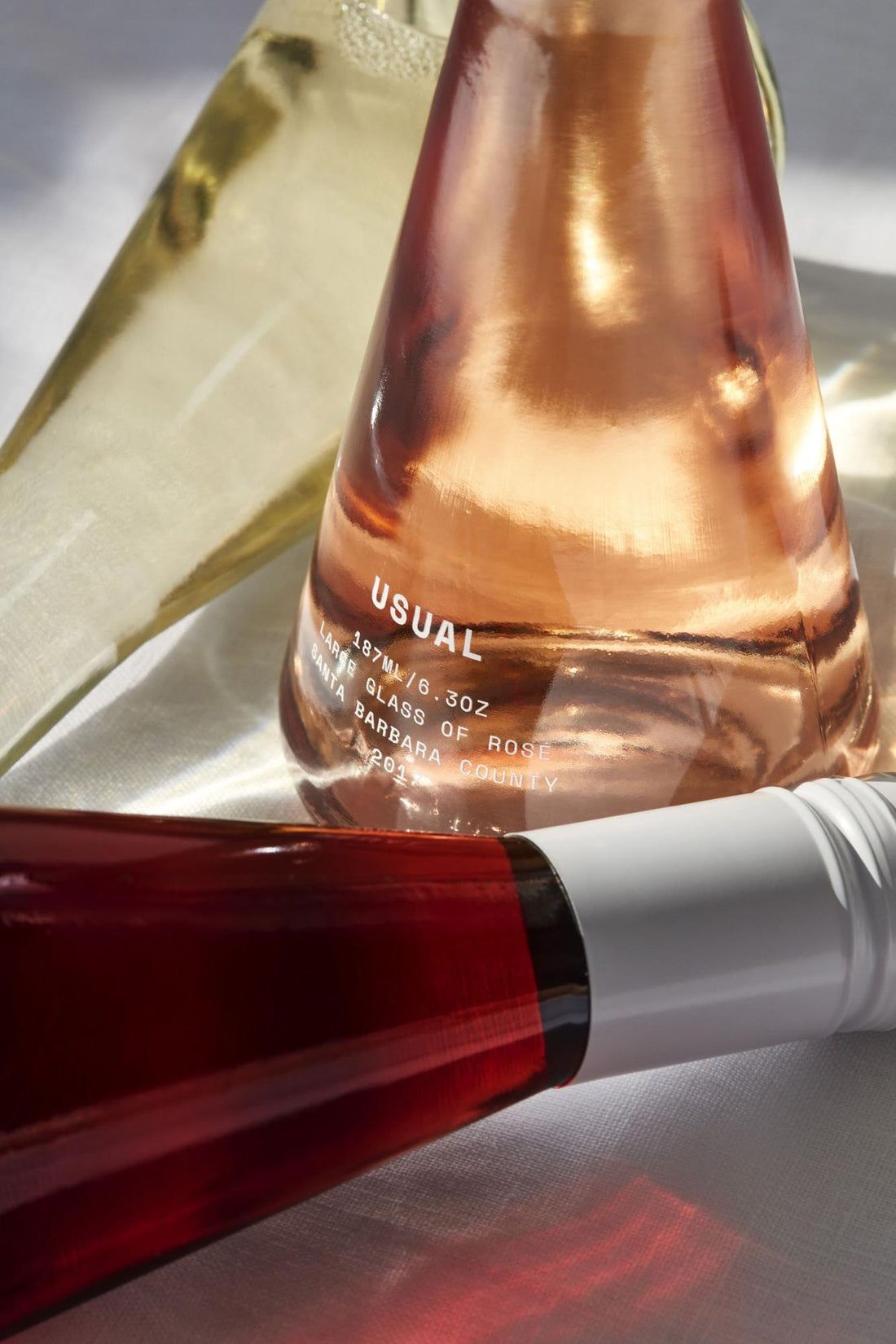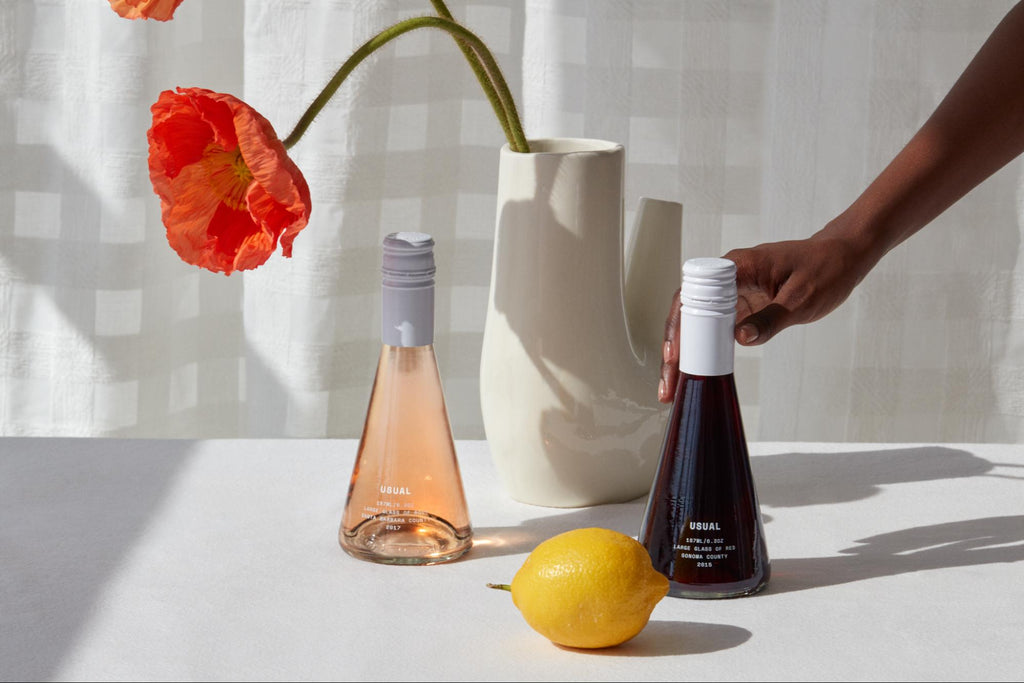
Alcohol Content of Wine: How to Choose the Right Wine ABV for You
McKenzie HaganWe've all heard it before: A glass of wine a day can be good for your health. But you might be wondering, how much alcohol is in that glass of wine? American guidelines set the standard serving of wine as 5 ounces, which has about 12% alcohol. But since there are so many different types of wine, not all glasses are created equal.
If you’re enjoying wine with higher alcohol by volume (ABV), then your single serving will be smaller. Conversely, if you're sipping on something that's quite low in alcohol, a more generous pour would equal one serving.
To help you understand the highs and lows of alcohol content of wine we're giving you a brief breakdown of how alcohol levels are determined in the winemaking process, plus we'll take you through which wines have lower alcohol content and which ones have higher alcohol content. We'll also talk a bit about how the amount of alcohol can affect the taste of wine along with some delicious ideas for food pairings based on alcohol levels.
The Science Behind the Alcohol Content of Wine
Whether we're talking about red wine or white wine, sparkling wine or still, the alcohol content of wine is directly proportional to how much sugar is in the grapes. The more sugar there is, the greater potential there is for alcohol during fermentation.
The fermentation process breaks down the sugar in grapes and converts it into alcohol. Fermentation stops naturally when all the sugar is gone or when the winemaker interrupts it, sometimes by adding more sugar (known as chaptalization) or by fortifying it with a distilled spirit to create fortified wine.
Other factors in how much sugar and alcohol are in a bottle of wine are the type of wine, variety of grape, and climate of the region where the grapes are grown.
For example, cooler climates have a shorter growing season and cooler summers that don't expose the vine to tremendous amounts of sunshine. Cool climate regions include Champagne, France; Mosel, Germany; and Willamette Valley, Oregon.
Conversely, warmer climates have more sunshine, thereby producing more sugar in the grapes and ripening them more quickly. (And often creating a higher ABV.) Warm climate regions include Sonoma, California; Colchagua Valley, Chile; and Murray Valley, Australia.
Understanding Wine ABV from Lowest to Highest

Depending on who you ask, wine ABV can be broken into several categories with varying thresholds. Some will argue for four or more categories ranging from low to very high.
We find that overly complicated. Instead, we've taken a broader approach to these imaginary limits to keep things practical and easy to understand. (Like you, we don't do well with fussy. It's just not our style.)
As with most things in life, there are always exceptions to the rules. The numbers we use here are general assessments of the alcohol content in different wines. As such, be sure to check the ABV percentage on the wine label to confirm how much alcohol you’re actually drinking. We also included the winegrowing regions since local climate plays a role in alcohol levels.
Which Wines Have the Highest Alcohol Content?
Low-Alcohol Wines: Under 12.5% ABV
How low can you go? If you're trying to cut back on your alcohol intake, these lightweight vinos are just the ticket. Most are light, sparkling, and versatile enough to enjoy year-round for any occasion.
- French Gamay
- French Muscadet
- German Riesling
- Italian Asti
- Italian Brachetto d’Acqui
- Italian Prosecco
- Portuguese Rosé
- Spanish Txakoli
Moderate-Alcohol Wines: 12.5%-14% ABV
The next time you're shopping for your new favorite wines, take a look at the ABV on the bottle. You'll find that most wines fall within the moderate-alcohol category of 12.5%-14-ish%. Here are some top options to consider:
- Australian Chardonnay
- Austrian Grüner Veltliner
- Australian Riesling
- California Chardonnay
- California Pinot Noir
- California Rosé (hello, Usual Wines!)
- Champagne
- French Alsace
- French Beaujolais
- French Bordeaux
- French Burgundy
- French Malbec
- French Merlot
- French Pinot Noir
- French White Burgundy
- German Pinot Noir
- Italian Barolo
- Italian Chianti
- Italian Pinot Grigio
- New Zealand Sauvignon Blanc
- South African Sauvignon Blanc
- Spanish Rioja
High-Alcohol Wines: 14.5% ABV or Higher
Boasting the highest alcohol content, these wines are the booziest of the bunch. As you'll notice, many of these come from warmer climates such as Australia, California, and Chile, where grapes get plenty of sugar-making sunshine. Plus, a good deal of them are fortified wines, which are boosted with a distilled spirit.
- Australian Cabernet Sauvignon
- Australian Shiraz
- California Cabernet Sauvignon
- California Syrah
- California Zinfandel
- Chilean Cabernet Sauvignon
- Fortified wines (Sicilian Marsala, Spanish Sherry, Portuguese Madeira, French Muscat)
- Merlot from Australia, California, or Chile
Another factor that contributes to the alcohol content of wine is the type of yeast used in fermentation. Certain yeast strains can tolerate higher alcohol levels, allowing fermentation to continue for longer and leading to a higher ABV. However, it's worth noting that while high-alcohol wines might pack a punch, they are not necessarily superior in taste or quality to lower-alcohol wines. It all comes down to personal preference.
Food Pairings Based on the Alcohol Content of Wine

Everyone interprets the taste of alcohol differently. While some might find it astringent and bitter, others find its bite wonderfully refreshing. Wines with high alcohol content tend to taste bolder and leave a thicker sensation on the palate, while lower-alcohol wines have a crisper and lighter mouthfeel. (FYI, feel free to check out our guide on wine terms for more fancy-pants ways to describe wine.)
Now that you have a clearer understanding about the nuances between different wines and their alcohol levels, let's get down to how you want to serve them with your favorite foods. As always, have fun and don't be afraid to experiment. Use these handy tips for your next wine-tasting party.
- Low-Alcohol Wine Pairings: These lighter options are fantastic with seafood, appetizers such as charcuterie and crudités, and soft cheeses like Brie, feta, and mascarpone.
- Medium-Alcohol Wine Pairings: This category offers the most variety in terms of wine types, so there's no one-wine-fits-all approach. Pair lighter-bodied reds like Pinot Noir with salmon, pasta dishes, or pork chops. Match poultry, pork, and shellfish with full-bodied white wines like Chardonnay. Check out this compilation of wine and cheese pairings for more ideas.
-
High-Alcohol Wine Pairings: Rich wines are ideal for meaty meals, especially those with flavorful (and slightly sweet) sauces such as barbecued short ribs. Fortified wines make excellent dessert wines, so pair them with rich desserts such as chocolate cake or creme brulee. You can also sip them on their own.
Choosing the Perfect Wine Based on Alcohol Content
From climate to fermentation, a lot goes into making a bottle of wine and determining how much booze it actually has. But while alcohol levels certainly have an impact on the taste, texture, and effects of wine, they don't determine quality. You can have a great bottle of wine regardless of the ABV.
Keep in mind that higher-alcohol wines are full-bodied with more intense flavors while lower-alcohol wines are a bit more balanced and tend to be more versatile for food pairing. The bottom line is that when it comes to the alcohol content of wine, it's a matter of personal taste. Whether it's red, white, or rosé wine, as long as you enjoy your bottle of wine — and drink it responsibly — you'll have a good time discovering its highs and lows.








